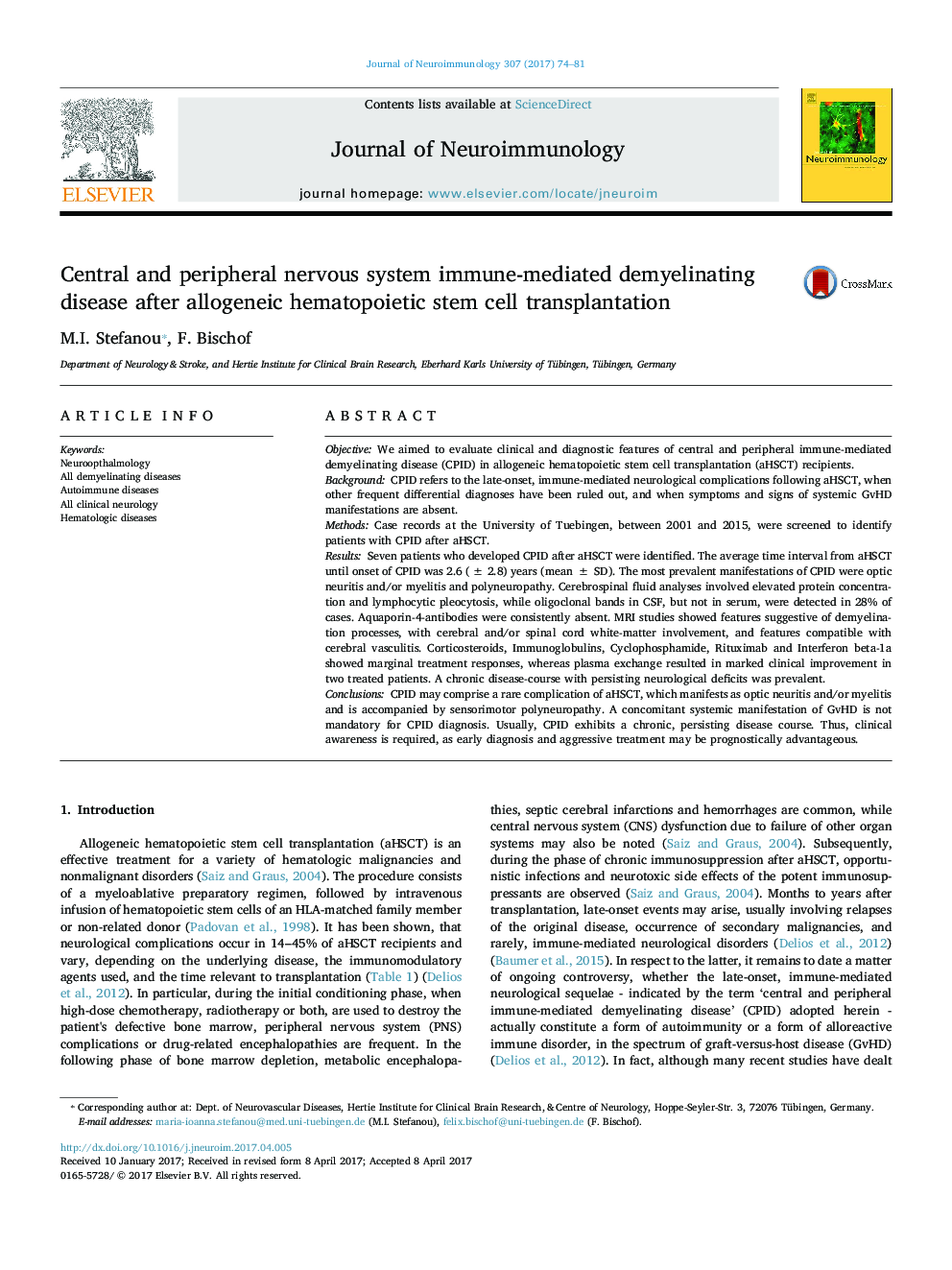| کد مقاله | کد نشریه | سال انتشار | مقاله انگلیسی | نسخه تمام متن |
|---|---|---|---|---|
| 5630340 | 1580368 | 2017 | 8 صفحه PDF | دانلود رایگان |
- Central & peripheral nervous system immune-mediated demyelinating disease (CPID) may follow allogeneic stem cell transplantation.
- The clinical and diagnostic features of CPID are discussed.
- CPID differs from Graft-versus-host disease and therefore, different treatment strategies may be required.
ObjectiveWe aimed to evaluate clinical and diagnostic features of central and peripheral immune-mediated demyelinating disease (CPID) in allogeneic hematopoietic stem cell transplantation (aHSCT) recipients.BackgroundCPID refers to the late-onset, immune-mediated neurological complications following aHSCT, when other frequent differential diagnoses have been ruled out, and when symptoms and signs of systemic GvHD manifestations are absent.MethodsCase records at the University of Tuebingen, between 2001 and 2015, were screened to identify patients with CPID after aHSCT.ResultsSeven patients who developed CPID after aHSCT were identified. The average time interval from aHSCT until onset of CPID was 2.6 (± 2.8) years (mean ± SD). The most prevalent manifestations of CPID were optic neuritis and/or myelitis and polyneuropathy. Cerebrospinal fluid analyses involved elevated protein concentration and lymphocytic pleocytosis, while oligoclonal bands in CSF, but not in serum, were detected in 28% of cases. Aquaporin-4-antibodies were consistently absent. MRI studies showed features suggestive of demyelination processes, with cerebral and/or spinal cord white-matter involvement, and features compatible with cerebral vasculitis. Corticosteroids, Immunoglobulins, Cyclophosphamide, Rituximab and Interferon beta-1a showed marginal treatment responses, whereas plasma exchange resulted in marked clinical improvement in two treated patients. A chronic disease-course with persisting neurological deficits was prevalent.ConclusionsCPID may comprise a rare complication of aHSCT, which manifests as optic neuritis and/or myelitis and is accompanied by sensorimotor polyneuropathy. A concomitant systemic manifestation of GvHD is not mandatory for CPID diagnosis. Usually, CPID exhibits a chronic, persisting disease course. Thus, clinical awareness is required, as early diagnosis and aggressive treatment may be prognostically advantageous.
Journal: Journal of Neuroimmunology - Volume 307, 15 June 2017, Pages 74-81
